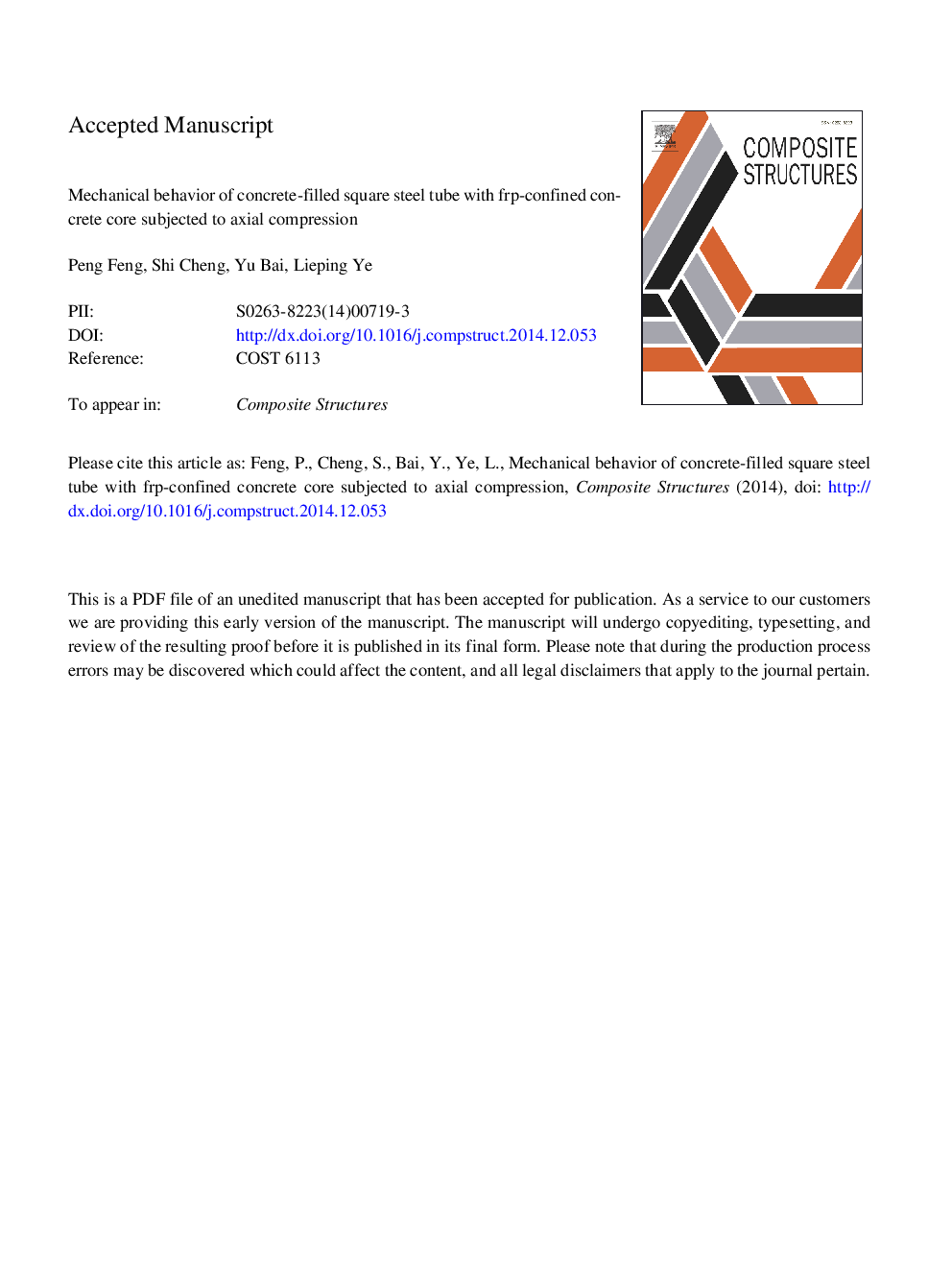| Article ID | Journal | Published Year | Pages | File Type |
|---|---|---|---|---|
| 6707044 | Composite Structures | 2015 | 52 Pages |
Abstract
A novel column consisting of steel, concrete and fiber-reinforced polymer (FRP) is presented and assessed through experimental study. The sectional form of steel-concrete-FRP-concrete (SCFC) columns has a square steel tube as the outer layer and a circular filament-wound FRP tube as the inner layer, and concrete is filled between these two layers and within the FRP tube. Thus the column can be regarded as a concrete-filled square steel tube (CFST) with a FRP-confined concrete core (FCCC). In comparison to existing composite column sections, several advantages are achieved such as ease of connection to beams, the stronger confinement of core concrete, ductile response, and residual load capacity. 18 SCFC stub columns are tested with different concrete strengths, FRP tube thickness and steel tube thickness in comparison to four traditional composite columns. The distinctive behaviors of SCFC columns, including significant post-yield stiffness, ductile failure, and stable residual bearing capacity are found. Test results show that the strengths of concrete, FRP, and steel are effectively utilized at different stages, including the initial linear stage, the secondary linear stage (hardening stage), and the post-peak stage. The influences of key design parameters on the mechanical characteristics of initial compressive stiffness, peak strain, residual load-bearing capacity, and ductility are also clarified.
Related Topics
Physical Sciences and Engineering
Engineering
Civil and Structural Engineering
Authors
Peng Feng, Shi Cheng, Yu Bai, Lieping Ye,
